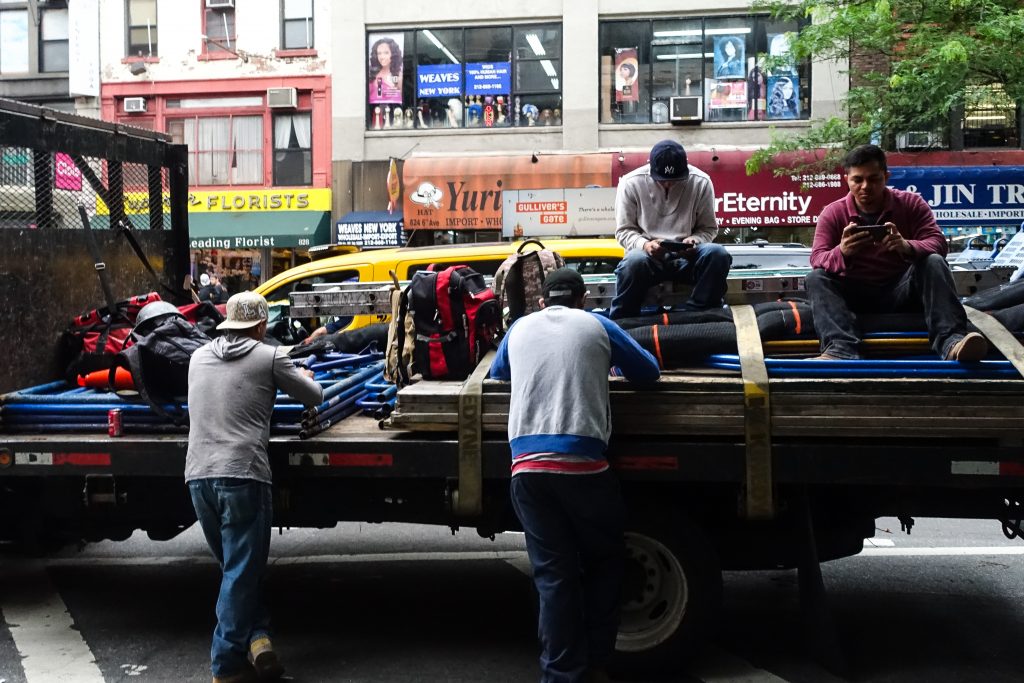 Too many workers are dying in the states of Kansas, Missouri and Nebraska, according to OSHA Region VII, and employers need to do something about it. An OSHA alert has gone out from the region, “seeking to stem a recent increase in workplace fatalities in Kansas, Missouri, and ebraska.” The press release cites “an increase in fatalities associated with falls, struck-by objects and vehicles, machine hazards, grain bin engulfment, and burns” and notes that “OSHA has investigated 34 fatalities in these three states since Oct. 1, 2017.”
Too many workers are dying in the states of Kansas, Missouri and Nebraska, according to OSHA Region VII, and employers need to do something about it. An OSHA alert has gone out from the region, “seeking to stem a recent increase in workplace fatalities in Kansas, Missouri, and ebraska.” The press release cites “an increase in fatalities associated with falls, struck-by objects and vehicles, machine hazards, grain bin engulfment, and burns” and notes that “OSHA has investigated 34 fatalities in these three states since Oct. 1, 2017.”
Some of the more recent fatalities in these states gleaned from the Confined Space Weekly Toll include 39-year-old Rafael Ayala Orozco, of Grand Island, Nebraska, who fell about 80 feet to his death at a fertilizer plant construction site near Hastings and an un-named worker who died at a Michael Foods in Wakefield, Nebraska, last September.
In Missouri, two workers, Joey Hale, 44, and Ben Ricks, 58, died after falling down an elevator shaft at a St. Louis construction site last month. Stephen Lemay was killed when a TV tower in Webster County collapsed near Springfield, and Stephen Tepatt was electrocuted near Fenton, Missouri last December when the boom on his vehicle hit a high power line and was electrocuted by 12,000 volts.
And in Kansas recently, two Westar Energy employees, operations supervisors Craig Burchett and Jesse Henson died after suffering severe burns at the utility’s electrical largest plant. Jubal D. Hubbard was killed when a high-pressure valve ruptured near Olathe, Kansas last December.
Now calling out employers in these states because they are killing too many workers is a good thing, and rather rare for OSHA. I applaud it.
What bothers me, however, is the wording and tone of the press release. OSHA uses it to advertise its compliance assistance activities, highlighting its free On-site Consultation Program for small- and medium-sized businesses, as well as OSHA’s Recommended Practices for Safety and Health Programs “which offers practical advice on how an organization can create and integrate safety and health programs.”
So far, so good. OSHA’s consultation program and health and safety program practices — including its upcoming “Safe and Sound Week” campaign — are good things, especially for employers who want to do the right thing, but just need a little help.
But then OSHA tells employers that “By implementing and sustaining workplace safety and health programs we can help employees avoid preventable injuries and fatalities.”
To my ears, this sounds a bit blame-the-workerish. Employers are required to provide safe workplaces. Period. Telling employers they should implement health and safety programs to “help employees” avoid injury or death is kind of like saying we should teach men about women’s rights so that we can “help women” avoid rape.
Telling employers they should implement health and safety programs to “help employees” avoid injury or death is kind of like saying we should teach men about women’s rights so that we can “help women” avoid rape.
Injuries and fatalities are not preventable because employees “avoid” them. Certainly, training is important. But the bottom line is that injuries and fatalities are preventable because employers eliminate or minimize the hazards that cause them.
I’m also concerned with what’s missing from the press release. There is no encouragement of workers to exercise their legal rights under the law. Workers have the right to get information about many of the hazards they’re exposed to, get training and file complaints with OSHA if their employer fails to provide a safe workplace. Strongly encouraging workers to use these rights to prevent injuries, illnesses and fatalities is important in those companies where workers are getting killed, not because their employers haven’t taken advantage of OSHA’s valuable compliance assistance opportunities, but because they are illegally cutting corners on safety.
There is no mention in the press release of workers’ role in exercising their legal rights under the law.
If OSHA really wants to put pressure on employers in these states, the agency needs to emphasize compliance with the law, enforcement of that law — and workers’ legal role in that process — as well as compliance assistance. The agency needs to not only motivate employers to take advantage of compliance assistance opportunities, but also encourage workers to use their rights to file complaints against employers who are just trying to save a buck on the backs — and lives — of their employees.
I will undoubtedly be criticized for nit-picking the wording of a press release and not being adequately appreciative of this initiative. (Use the comments below.) But words and message are important. OSHA doesn’t work if workers don’t know their rights and aren’t encouraged to exercise them. And workplace safety doesn’t work if employers are encouraged to paternalistically “help” their workers, rather than being reminded of their legal responsibility to make their workplaces safe.
No criticism here. Easier to blame the workers than to conduct the hazard assessments an implement hazard controls that protect workers (sometimes from their own errors). Anticipating how things can go very wrong is the value safety and industrial hygiene professionals add to assist employers in meeting their responsibilities. I’ll go out on a limb and postulate that there were no S&H professionals on-site when those fatalities occurred.
[…] article was originally published at Confined Space on July 19, 2018. Reprinted with […]